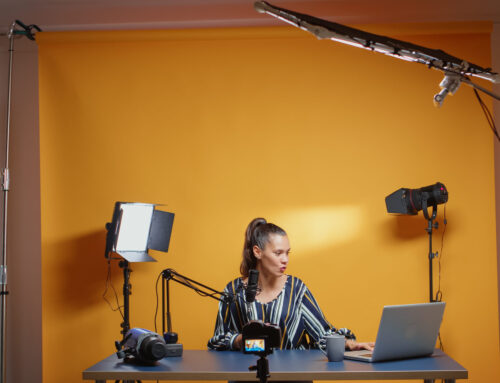We get lot of question about the best ways to use photos especially of clients. Today, Holly Bodner joins us to share some tips on using your own photos. ~Kristina

Guest Post by Holly Bodner
We’ve probably all heard by now that when it comes to nonprofit marketing, original photographs are preferable to stock images. One powerful photo can help your audience make an authentic, emotional connection with your cause.
Before you take out the camera, though, check whether your organization has a policy regarding the use of original photos, specifically how to handle obtaining permission from people that will be shown in the photos. Does your organization have photo permission forms (and guidelines for how to use them)? Is there an ethical photo policy to address how people are portrayed?
#1 Permission Forms
Written consent is the gold standard, but organizations obtain it in a variety of ways. Some secure permissions in advance, but when that isn’t an option – there isn’t time, for instance – you may need to hand out forms during an event. Either way, it’s important to obtain informed consent: people you photograph have the right to ask questions about how their images will be used and understand that they can say no if they are uncomfortable being photographed.
The National Press Photographers Association (NPPA) provides template photo releases on their website. There is also a “pocket” release (a small version photographers can carry with them) and a photo release for children.
The Center for Nonprofit Resources (C4NPR) provides a downloadable sample photo release on its website.
#2 Obtaining Permission
Obtaining permissions during an event can present a dilemma for small nonprofits that don’t have enough staff to track down forms or shadow a photographer. Some organizations let people know when they sign up for events whether cameras will be present. The Lincoln Tree of Hope, a community-building nonprofit based in Nebraska, has used this approach. As board member Denise Goin explains, “We have had a few families decline to attend just for that reason, but we can’t control who the news team may photograph, so we had to make it a hard yes or no.”
#3 Ethical Photo Policies
In addition to legal permission, there are ethical considerations for using someone’s photograph to promote your organization. According to The Photography Ethics Center, “When we take and share photographs, we are shaping how others view the world. This is an amazing privilege, and an enormous responsibility.” To that end, nonprofits such as WaterAid have developed ethical photo policies to “sensitively and fairly portray the need that we seek to address.” For WaterAid, this includes avoiding stereotyping and ensuring non-discrimination toward marginalized individuals.
Organizations that focus on sensitive subject matter face even greater challenges when it comes to the images they use. This is particularly true for organizations that work with children.
UNICEF has devised a set of reporting guidelines for journalists that report on children’s issues, as well as guidelines for documenting abuses while protecting children at risk.
MediaWise has developed training packages and guidelines for media professionals and nonprofits around the world for dealing with coverage of health communications, reporting about children, and reporting about suicide.
When You Have to Use Stock
What if stock images are your only option, such as due to privacy issues? Nothing screams “generic” quite like finding that your carefully chosen stock image also appears on a billboard for a local business. There are a few things you can do to reduce the chances of this happening.
First, consider paying for rights-managed or exclusive rights to an image. This guarantees that your organization will have certain rights to an image for a set amount of time. These licensing agreements are also options if you decide to hire your own photographer.
If that proves to be cost-prohibitive, consider conducting a “reverse image search,” which will give you an idea of how many times a particular stock image is already being used. This can be accomplished through a reverse search engine such as TinEye, or through Google’s reverse image search.
Should We Show the Need?
Lastly, there continues to be debate in the nonprofit sector as to whether people are more motivated to act when they view unsettling images of need, or when they see photos of an organization’s positive impact. This is one instance where an ethical photo policy could help determine whether the use of certain images is justified. One way to find out which images resonate with your audience is A/B testing.
Resource Media has put together a visual project planning sheet and a storytelling best practices guide that includes instructions for organizations to conduct their own A/B testing of images.
Have a Procedure
The most important thing for nonprofits to consider before taking their own photographs for marketing purposes is to have a photography procedure. Share the information – including permission forms, instructions on how to obtain permission, and any ethical photo policies – with staff members, volunteers, and anyone who will be taking photos on behalf of the organization.
Holly Bodner is a communications consultant and the founder of TwoReasons Media.





